Why you can trust TechRadar
Interface and reliability
- Prime customers will benefit the most from Fire OS
- Amazon Appstore continues to lag way behind
At its heart, the Amazon Fire 7 (2017) runs on Android. For all intents and purposes, though, it’s a completely separate OS.
At first glance, the Home section of the so-called Fire OS makes it look much like any regular Android tablet. This essentially presents a list of all the apps you have installed on the device - though this one scrolls through them vertically.
Shifting right will reveal what the Amazon Fire 7 and its Fire OS are really about - bringing you all of the media content and online shopping that Amazon has to offer in one easily browsable interface.
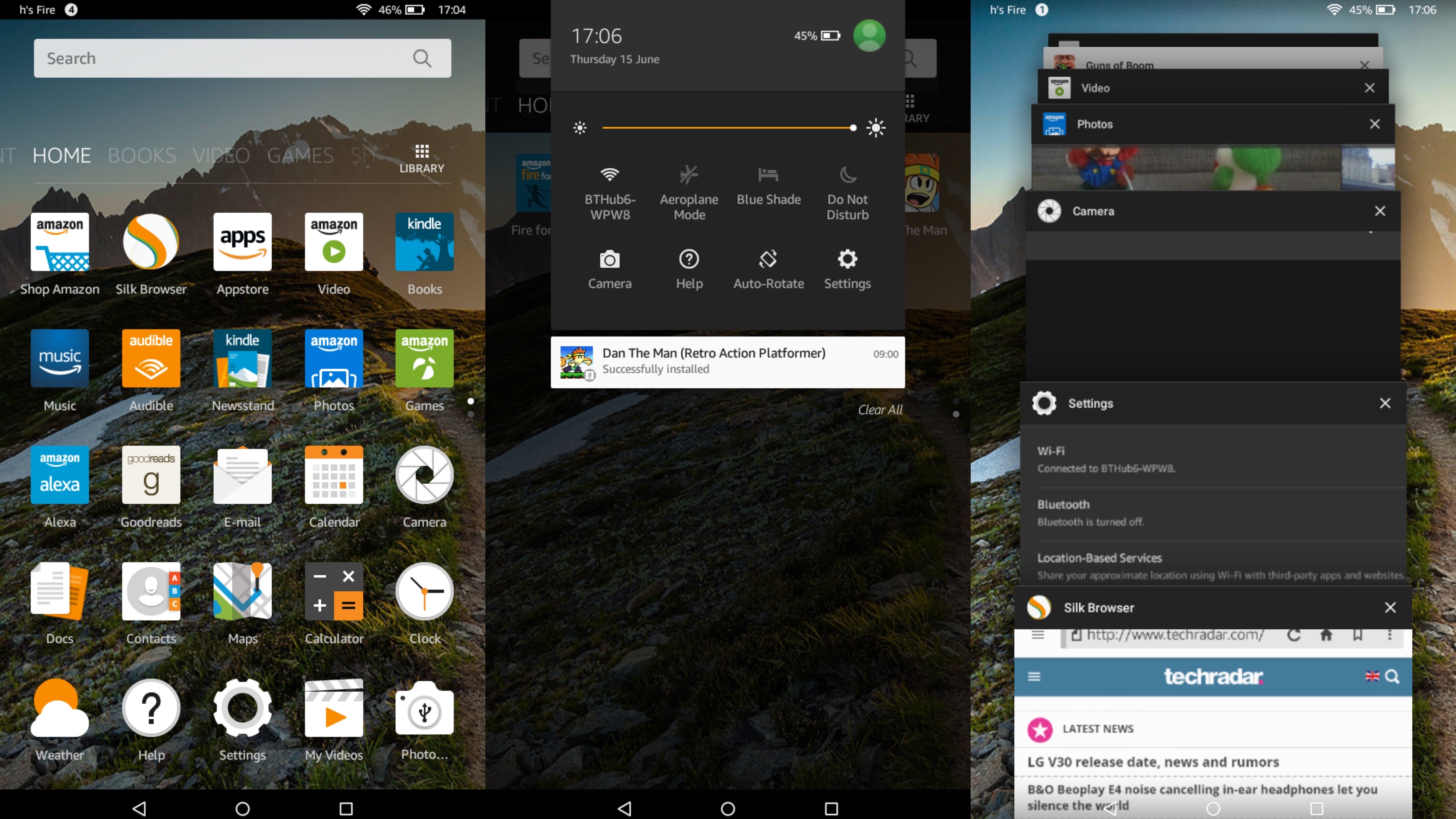
The classic Fire OS carousel has only really been gently refined over the years, and it’s still a reasonably pleasant - if somewhat busy - interface to navigate. The focus here is notably different to its rivals, though.
Neither iOS nor Android brings your media front and center to the same extent, choosing instead to silo the content off into separate apps.
Which approach you prefer depends on your individual usage. In particular, the Amazon Fire 7 is a way more involving device to use if you’re a fully paid up Prime customer.
Prime membership means that under the Video tab you’ll have seamless access to the latest Prime TV offerings alongside your purchased or rented content, while Music acts as a portal to Prime’s curated streaming catalog of two million songs - again alongside any digital music you might have purchased through the online retailer.
The Books section is far more than an after-thought here, given Amazon’s considerable ebook presence. If you’ve ever bought any digital books for a pure Kindle device, they’ll be available to view here.
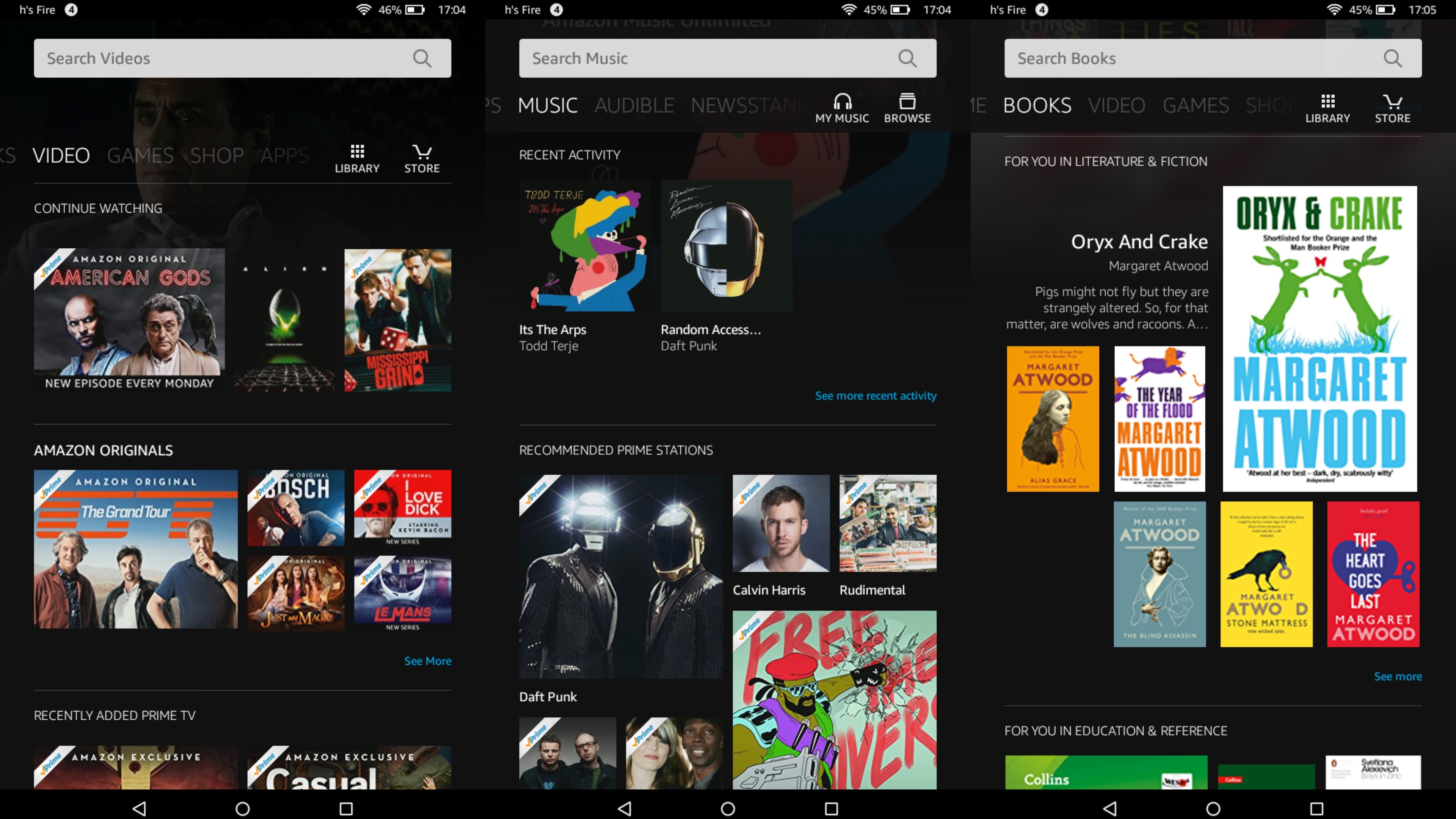
Ordinarily we’d discuss such things in the following media section of the review, but with the Amazon Fire range the media IS the interface. Suffice to say, if you lean heavily on Amazon for your media and shopping needs, the Amazon Fire 7’s interface has an awful lot to recommend it.
Perhaps the key difference between Fire OS and so many other custom Android interfaces relates to its app ecosystem. You don’t get access to the Google Play Store here, and that continues to be a major weakness in Amazon’s devices.
Sure, Amazon has its own Appstore with “over 500,000 of the most popular free and bestselling apps”. But both Apple’s App Store and Google’s Play Store have burst well past the 2 million barrier.
You might justifiably argue that most people only use a dozen apps at most, but when popular apps like Dropbox and YouTube - indeed, all of Google’s apps - aren’t available, you begin to see the problem. Avid gamers are even more poorly served, with few of the latest hits available here.
Movies, music and gaming
- Strong media access, provided you’re in deep with Amazon
- Weak hardware compromises media experience
As we’ve just discussed, the Amazon Fire 7’s whole raison d’être is media. Movies, music, gaming and books all get their own prominent tabs on the home screen, which makes this the most media-focused tablet on the market.
Provided you’re talking about Amazon media, of course.
All your latest Amazon-sourced videos are ready and waiting to be watched as soon as you flick to the Video tab, with assorted recommended categories below.
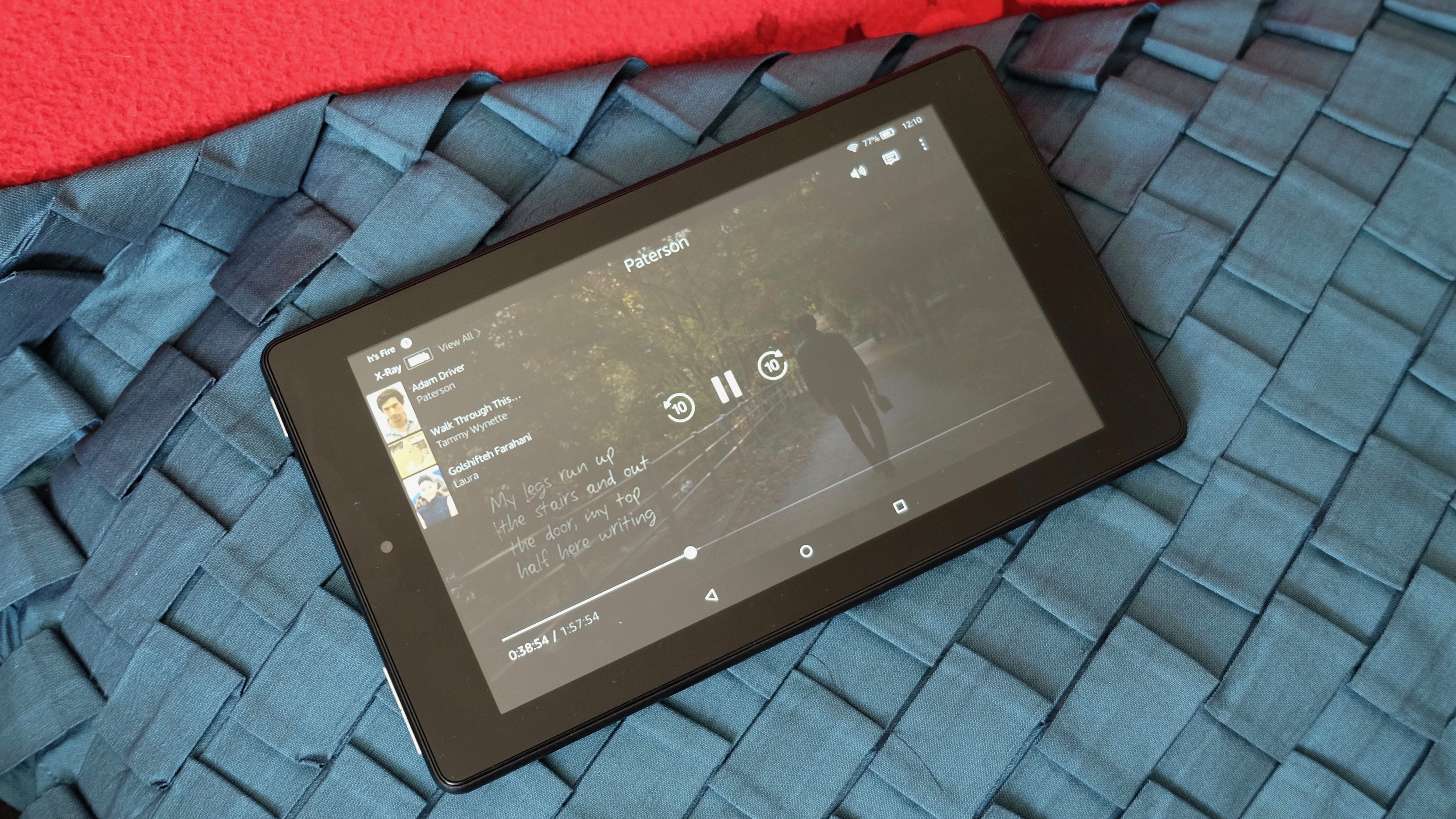
The video-watching experience itself is perfectly decent, though it is ultimately compromised by that sub-standard display. As we hinted at before, when media consumption is the whole purpose of your device, a capable screen is by far the most important component.
Attaining a bare minimum of 720p, as pretty much all streaming media does these days, would be advisable.
Games are similarly compromised by the Fire 7’s screen quality, but far more of an issue is the scarcity of available games on the Amazon Appstore compared to rival tablet platforms.
We’re pleased to note, however, that performance is not a concern when it comes to gaming. We played some pretty demanding 3D games in Real Racing 3 and the online FPS Guns of Boom (one recent hit that has made its way to Amazon), and it didn’t skip a beat. Meanwhile, fast-paced 2D fare like Dan The Man also ran flawlessly.
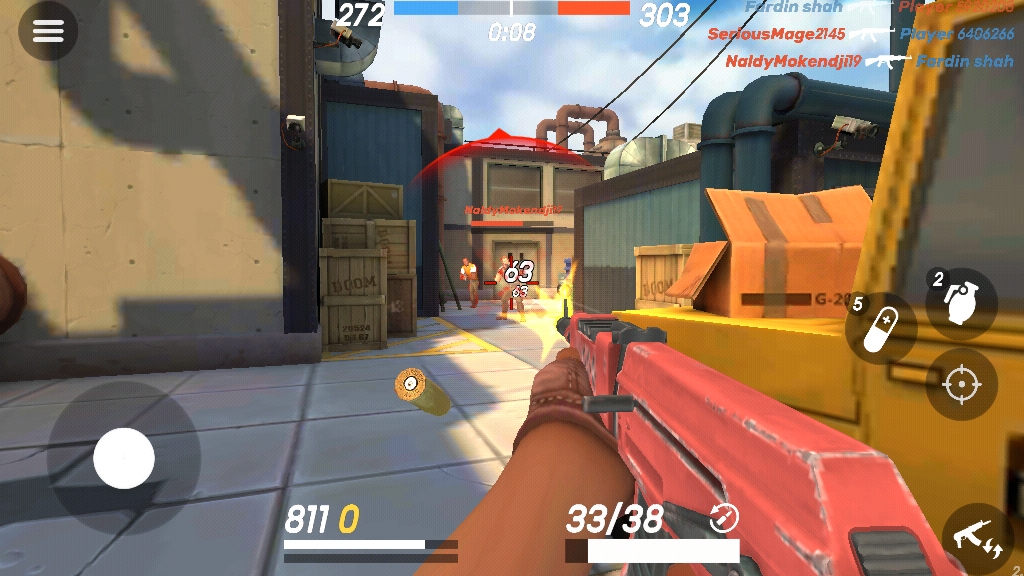
Given the ultra-budget price tag, it’s deeply impressive that the Amazon Fire 7 (2017) can handle what can be one of the most demanding tasks a mobile device can be given.
Another area in which the Amazon Fire 7 has the scope to shake off its weak display is when it comes to music. Unfortunately the cheap hardware takes its toll here too in the shape of a weak, lone rear-mounted speaker. The sound output is both tinny and, thanks to the speaker’s position, frequently muffled, while cranking up the volume soon leads to painful distortion.
Plug in a decent set of earphones or a Bluetooth speaker, though, and the Fire 7 makes for a decent media player. Indeed, at just $50/£50 we could imagine this being used in conjunction with a speaker as a cheap and cheerful garden or holiday stereo system. Though it’s perhaps at this point that we should note the Amazon Fire 7 (2017) isn’t waterproof.
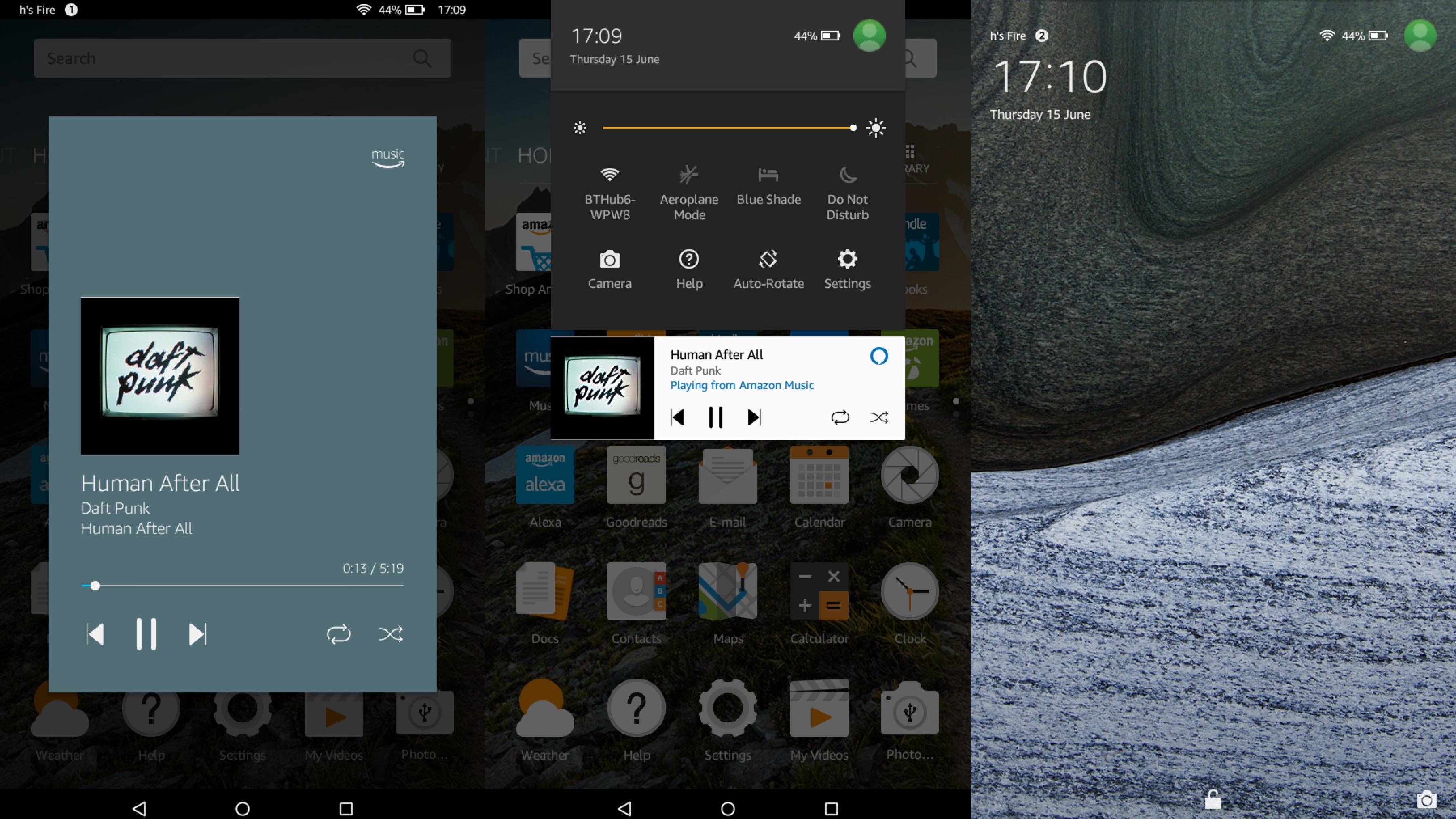
In terms of usability, Fire OS lacks lock screen media controls, meaning you’ll need to head to the home screen to pause and skip tracks. However, it does push a handy media control widget to the top of the notifications menu, which is helpful.
For all of your media, one issue you’ll quickly encounter is a lack of storage. The standard model of the Amazon Fire 7 (2017) has just 8GB of storage, which you’ll find will fill up alarmingly quickly. You’ll want to pop a microSD card in as soon as you open the box, but you can also do yourself a massive favor prior to that and spend the extra $20/£10 on the 16GB model.
Specs and benchmark performance
- Great with games, somewhat stuttery in general use
- Slow web performance through Silk Browser
If the Amazon Fire 7 (2017) has changed imperceptibly on the outside, it’s essentially the same device as before internally.
You’re looking at the very same 1.3GHz quad-core MediaTek MT8127 chip and 1GB of RAM that powered the 2015 model.
We’d have liked to have seen a power bump, but the fact remains that for $50/£50 the performance level is perfectly acceptable. Yes, there are much smoother so-called budget tablets out there, but you’d have to pay two to three times the price for the privilege.
As mentioned in the previous section, one of the biggest indicators of tablet performance is gaming, and that’s impressively slick on the Amazon Fire 7 (2017). It’s able to handle technically advanced 3D and 2D games alike with considerable composure.
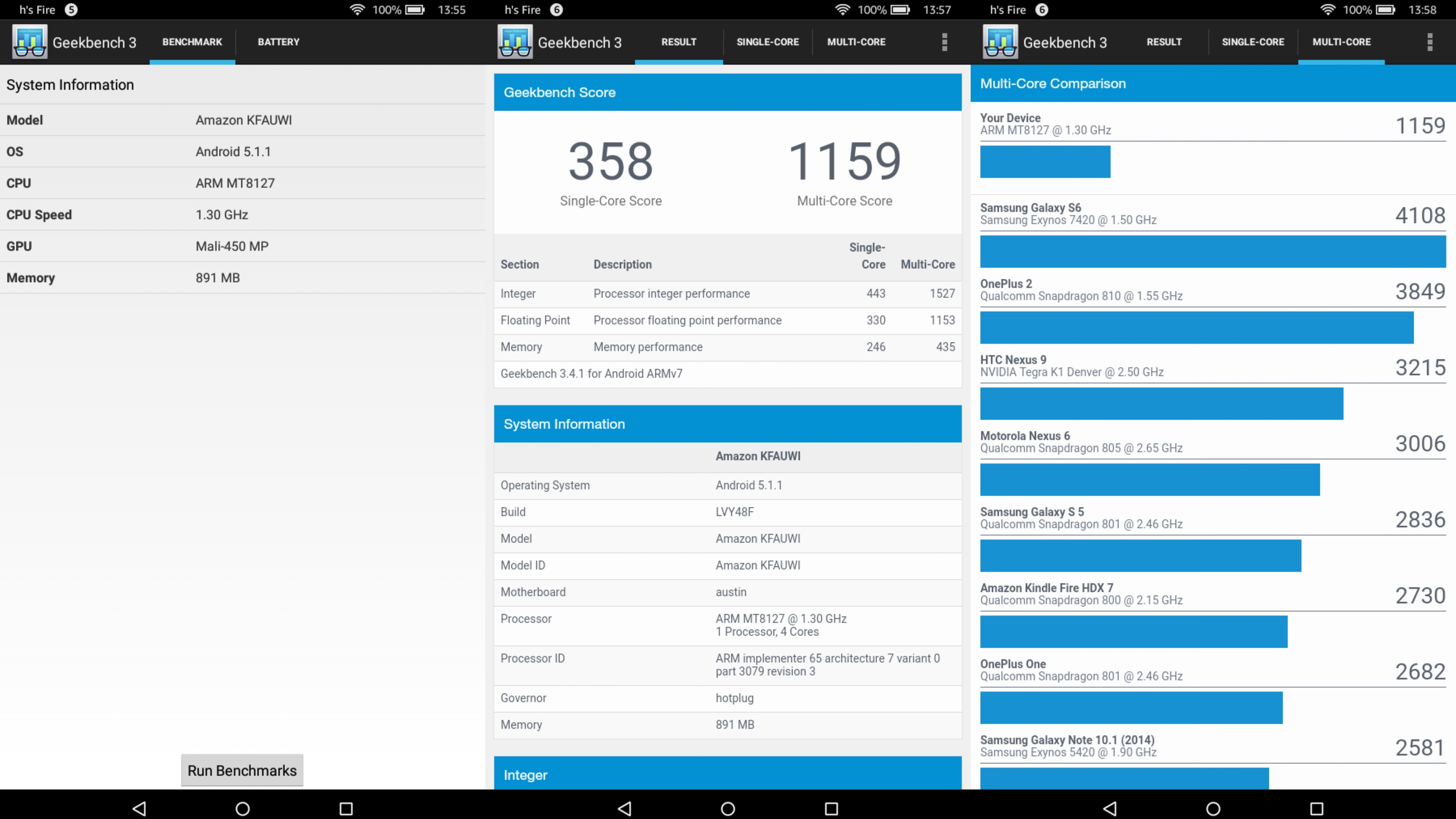
You have to concede that a major reason for that smooth gaming performance is likely to be the tablet’s sub-par 1024 x 600 display, which will be placing far less of a strain on the humble ARM Mali–450 than a 720p or 1080p screen would. Every cloud, and all that.
Rather than gaming, it’s in general usage that the Amazon Fire 7’s performance comes under strain. There are small but frequent pauses and stutters when moving between tabs and media files on the Fire OS home screen.
Meanwhile, web browsing on Amazon’s own Silk Browser can be a painfully slow experience, with full websites like TechRadar taking seconds to load up completely.
We might have checked this against Chrome, Firefox, and Opera performance on the same device, but of course none of those can be found on the Amazon Appstore.
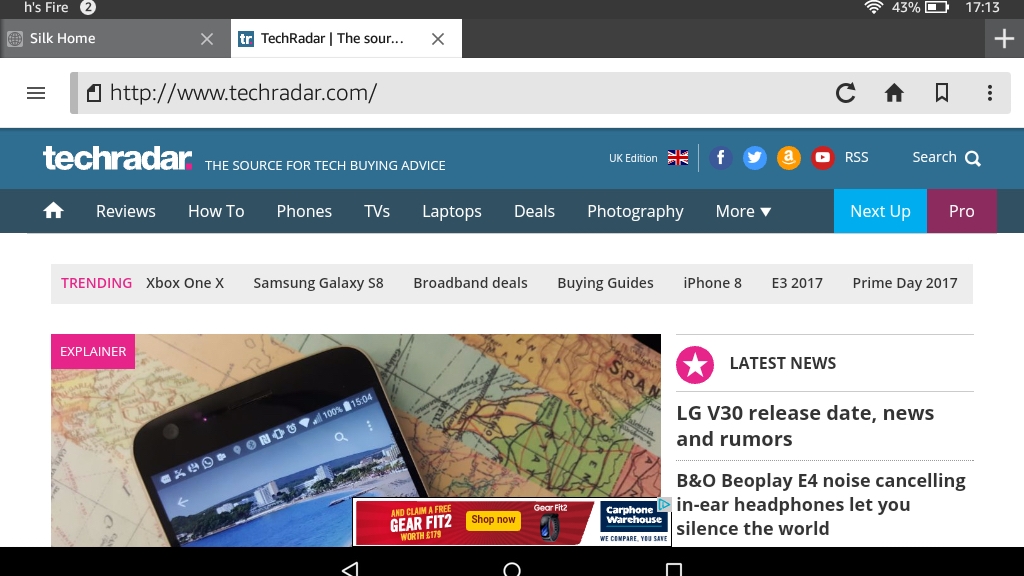
It seems likely that this is more an issue of limited RAM (things typically get a lot smoother in Android-based systems from 2GB upwards) combined with the quirks of Fire OS than any great CPU shortfall.
Geekbench benchmark results are predictably in line with the 2015 model. In fact, a multi-core score of 1197 is almost identical.
In terms of recent comparisons, the Asus ZenPad 10 Z300M scored 1943 with its faster MediaTek MT8163 CPU. Further up the scale, the iPad Mini 4 - comfortably the current mini-tablet champ - scored 3126 in our multi-core test.
Again, though, we have to keep coming back to that price tag. For $50/£50 you’re getting a competent general experience with particularly capable media performance. It’s still difficult to sniff at that even two years on from the previous model - though we have to say it’s getting easier.
Current page: What's it like to use?
Prev Page Introduction, key features and design Next Page Battery life and camera